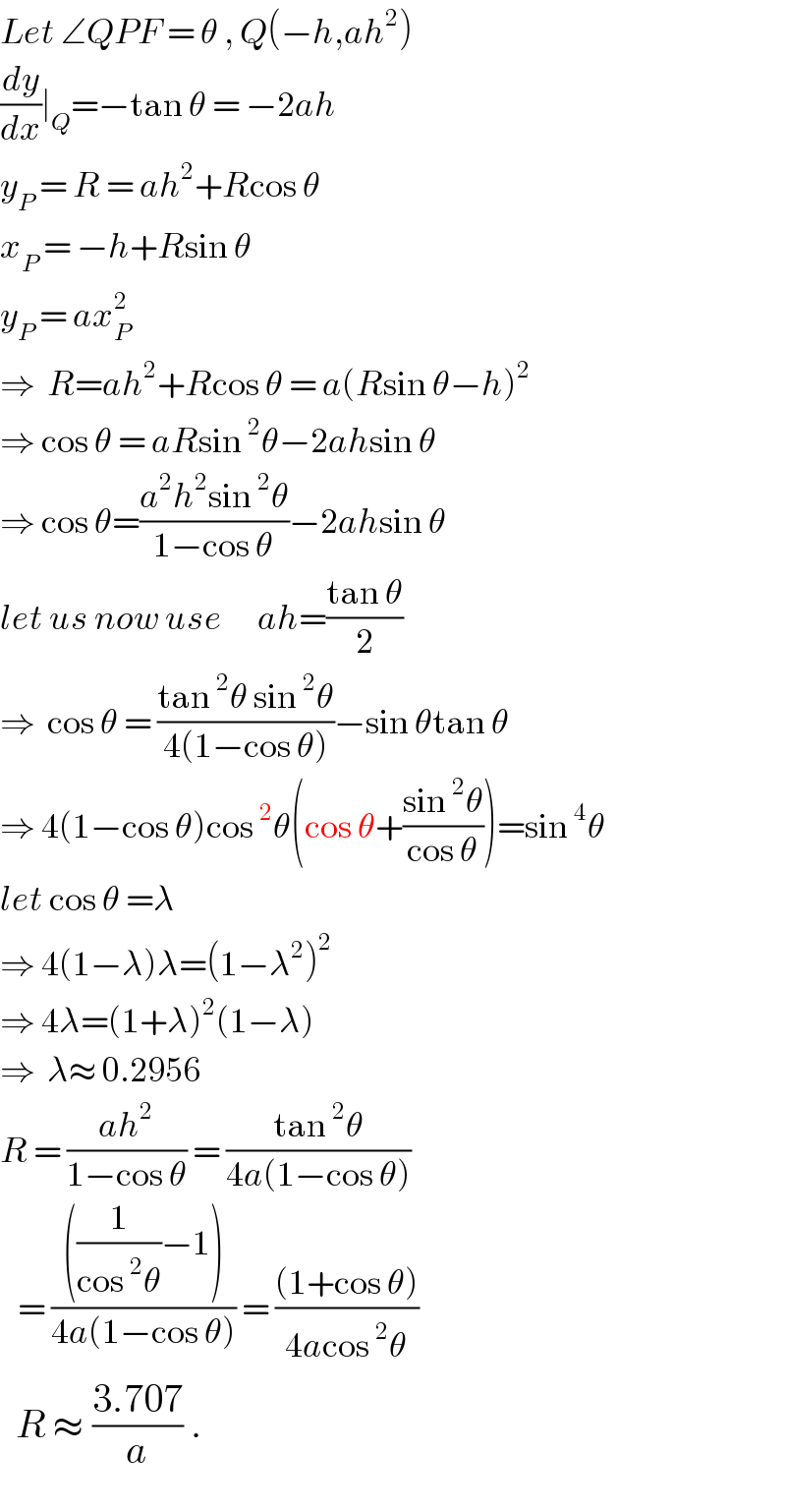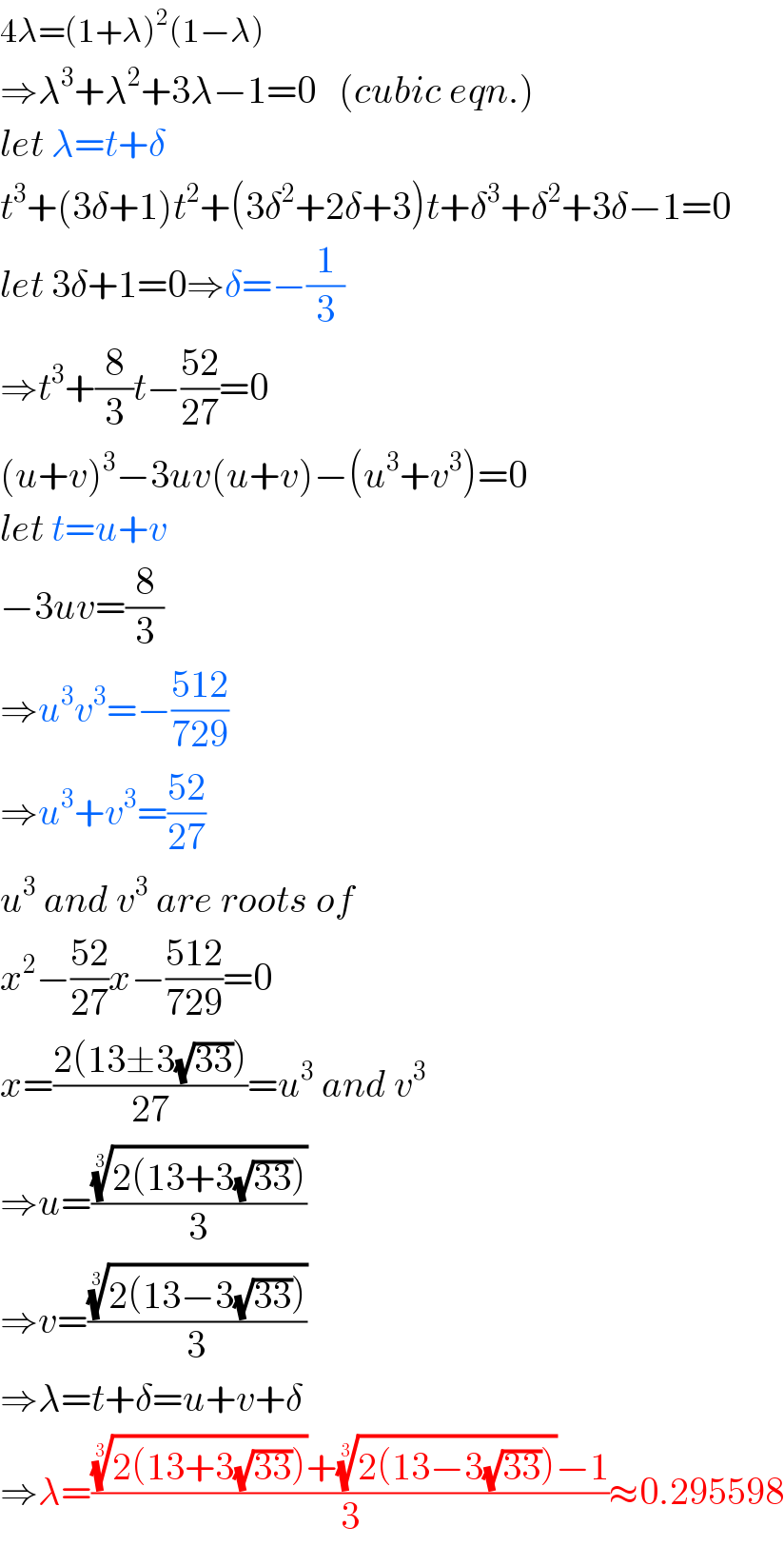
Question and Answers Forum
Question Number 52627 by ajfour last updated on 10/Jan/19

Commented by ajfour last updated on 10/Jan/19

Answered by mr W last updated on 10/Jan/19
![Q(−h,ah^2 ) y′_Q =−2ah eqn. of QP: y=ah^2 +(((x+h))/(2ah)) y=ax^2 ⇒ah^2 +((x+h)/(2ah))=ax^2 ⇒x^2 −(x/(2a^2 h))−h^2 −(1/(2a^2 ))=0 ⇒x_P =(1/2)[(1/(2a^2 h))+(√((1/(4a^4 h^2 ))+4(h^2 +(1/(2a^2 )))))] ⇒x_P =h+(1/(2a^2 h)) ⇒y_P =ah^2 +(1/(2ah))(2h+(1/(2a^2 h))) ⇒y_P =ah^2 +(1/a)+(1/(4a^3 h^2 )) PQ^2 =(h+(1/(2a^2 h))+h)^2 +(ah^2 +(1/a)+(1/(4a^3 h^2 ))−ah^2 )^2 PQ^2 =(2h+(1/(2a^2 h)))^2 +((1/a)+(1/(4a^3 h^2 )))^2 =y_P ^2 (2h+(1/(2a^2 h)))^2 +((1/a)+(1/(4a^3 h^2 )))^2 =(ah^2 +(1/a)+(1/(4a^3 h^2 )))^2 ⇒(2ah+(1/(2ah)))^2 =h^2 a^2 (2+a^2 h^2 +(1/(2a^2 h^2 ))) let λ=ah ⇒(2λ+(1/(2λ)))^2 =λ^2 (2+λ^2 +(1/(2λ^2 ))) ⇒4λ^6 −8λ^4 −6λ^2 −1=0 ⇒λ≈1.6159 ⇒R=y_P =(1/a)(1+λ^2 +(1/(4λ^2 )))≈((3.7069)/a)](Q52650.png)
Commented by mr W last updated on 11/Jan/19

Commented by ajfour last updated on 11/Jan/19

Answered by ajfour last updated on 11/Jan/19

Commented by mr W last updated on 11/Jan/19

Commented by ajfour last updated on 12/Jan/19

Commented by ajfour last updated on 11/Jan/19

Commented by mr W last updated on 11/Jan/19

